As the hot summer arrives, aquarium enthusiasts face the challenge of maintaining optimal living conditions for fish. For example, the water temperature. Rising temperatures will pose risks to certain fish species. Hence, it is crucial to choose aquarium inhabitants that can thrive in warmer water environments. In this guide, we will explore warm water fish that not only tolerate higher temperatures but also bring vibrant colors to your aquarium during the hot summer months.
Aquarium warm water fish for a hot summer
During hot summer periods, keeping aquarium water cool can be difficult. Then, can warm fresh water fish survive in a higher water temp? The definitive answer is Yes. For instance, German Blue Ram, Clown Loach, and Zebra Pleco.
However, the warmer the water, the lower the dissolved oxygen level in your tank. Thus, to prevent oxygen deprivation, you should improve surface agitation by adding an air stone, air pump, or sponge filter. Plus, some aquatic plants can also survive in higher water temps. Like, Java Fern, Sword Plants, and Anubias.
Are fish more active in warm water
Generally, fish tend to be more active in warm water. Warm water temperatures can increase the metabolism, which promotes the frequency of movement and foraging behavior.
Specifically, warm water provides optimal conditions for physiological processes, including digestion and muscle function. It can enhance their metabolism, leading to faster digestion of food and increased energy levels. In turn, it can result in more active swimming patterns and exploration of the living environment.
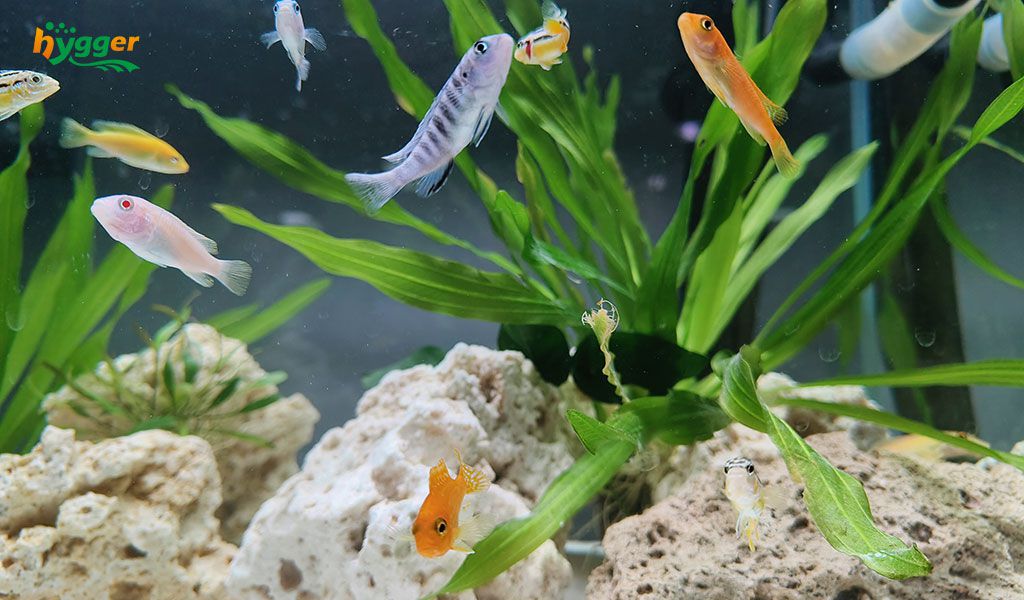
Nevertheless, it is important to note that fish behavior can vary depending on the species, individual temperament, and other environmental factors. Some fish may naturally be more active, while others may be more relaxed or prefer slower swimming patterns.
Additionally, extreme or sudden temperature changes can be stressful for fish. So maintaining a stable and appropriate temperature range for the specific fish species is necessary. And you can turn on the aquarium chiller cooling the whole tank continuous and stable during the hot summer.
Warm water aquarium fish in tropical fish
In this segment, we will cover some warm water aquarium fish in tropical fish.
- Angelfish (Pterophyllum scalare): Angelfish are native to the Amazon River basin and thrive in warmer water temperatures. They are graceful and majestic fish with triangular-shaped bodies and long fins.
- Neon Tetras (Paracheirodon innesi): Neon Tetras are from the blackwater streams of South America. They prefer warm water conditions. Also, featuring bright blue and red colors, Neon tetras are small.
- Gouramis (Trichogaster spp.): Gouramis come from Southeast Asia. Commonly, they come in various colors and sizes. Dwarf Gourami (Trichogaster lalius) and Pearl Gourami (Trichopodus leerii) are two popular gourami species.
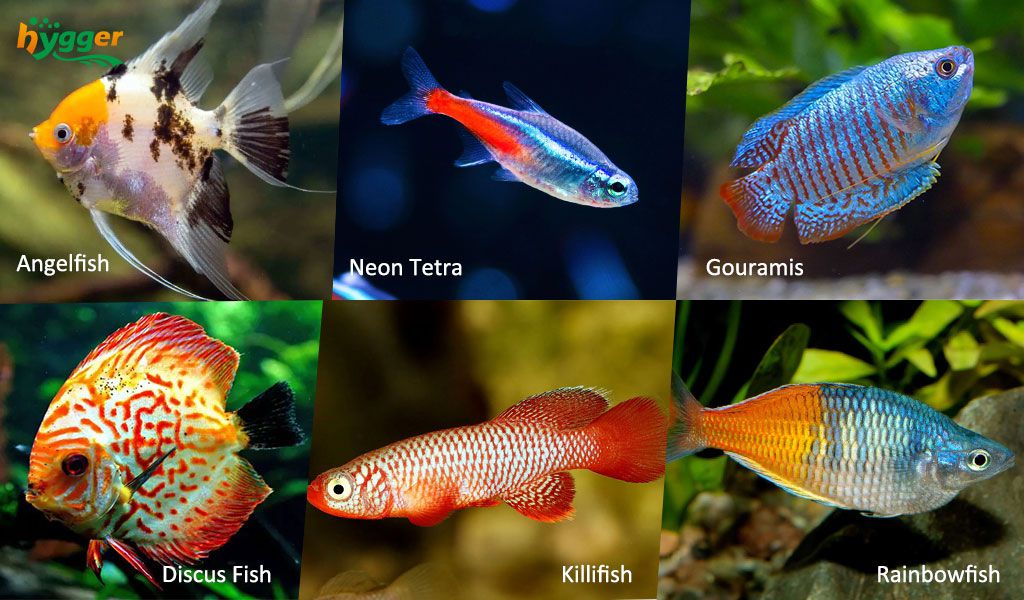
- Discus Fish (Symphysodon spp.): Discus fish are native to the Amazon River basin. They fancy a water temperature of 82-86℉ (28-30℃).
- Killifish (Fundulopanchax spp.): Killifish can be found in warm water habitats. Being famous for their unique breeding behaviors, Killifish are a diverse group of small, colorful fish.
- Rainbowfish (Melanotaenia spp.): Rainbowfish are native to Australia and Southeast Asia, and can thrive in warm water temperatures. Also, they feature vibrant colors and active swimming patterns.
Aquarium fish that can live in summer heat
In this part, we will list eight aquarium fish that can live in summer heat. If you are looking for aquarium fish that can tolerate higher temperatures during the summer heat, you can choose one of them.
| 1.White Cloud Mountain Minnow (Tanichthys albonubes)
Native to China, White Cloud Mountain Minnows are freshwater fish and cold water fish. They are hard and small. White Cloud Mountain Minnow can tolerate a wide range of temperatures up to around 80 °F (27 °C). |
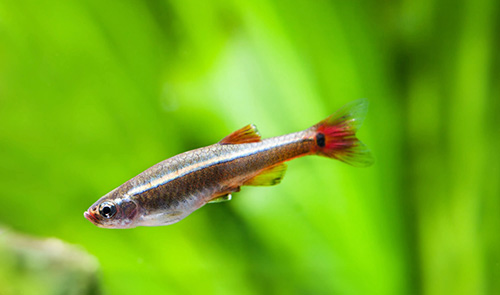 |
| Also, they are omnivores. You can feed them dry flakes, pellets, live and frozen foods (e.g. brine shrimp, daphnia, bloodworms, and mosquito larvae), and vegetables (e.g. lettuce and peas). | |
| 2. Rosy Barb (Puntius conchonius)
Rosy Barbs are popular freshwater fish species that originate from Southeast Asia. They are hardy, colorful, and active. In aquariums, Rosy Barbs can survive in a high water temperature of up to 82℉ (28℃). Rosy Barbs are omnivorous and can be fed with a wide variety of foods. |
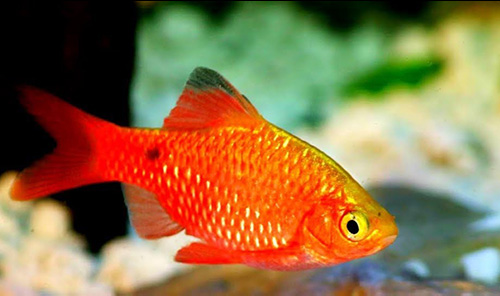 |
| For example, high-quality commercial fish flakes and pellets with a balanced mix of proteins, fats, and carbohydrates can be a staple food. Plus, you can feed live and frozen foods occasionally. Additionally, vegetable matters, like spinach, lettuce, and zucchini, provide fiber and various micronutrients. | |
| 3. Zebra Danio (Danio rerio) Zebra Danios are small popular and energetic freshwater fish, which are native to South Asia. Actually, they can tolerate temperatures up to around 80℉ (27℃). |
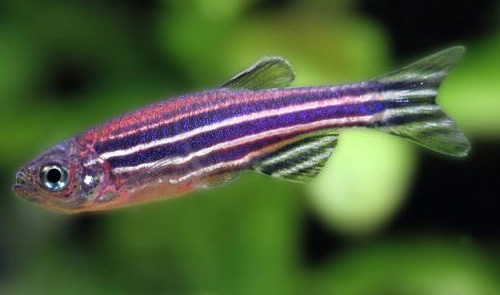 |
| Zebra Danios are omnivores and have a relatively broad diet. The available foods include high-quality commercial fish flakes and pellets, brine shrimp, mosquito larvae, bloodworms, small crustaceans, lettuce, zucchini, etc. Live and frozen foods are helpful to enhance their coloration. | |
| 4. Swordtails (Xiphophorus hellerii) Swordtails are tropical freshwater fish. Featuring an attractive appearance, vibrant colors, and sword-like tail fins, they can be kept in a tank with a higher water temperature of up to 82℉ (28℃). |
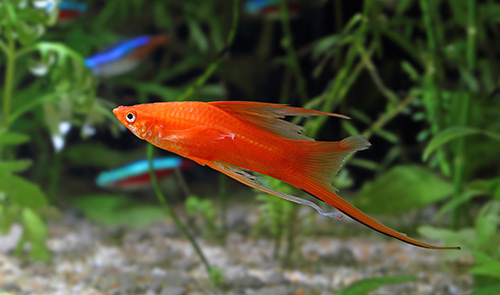 |
| Swordtails are omnivorous. To keep healthy, vibrant, and active Swordtails, a varied and balanced diet is necessary. You can feed them spinach, lettuce, zucchini, black worms, bloodworms, daphnia, brine shrimp, and other live or frozen foods, plus high-quality commercial fish flakes and pellets. | |
| 5. Bristlenose Pleco (Ancistrus spp.) Bristlenose Plecos are hardy freshwater catfish. They can survive in water temperatures up to around 86℉ (30℃). Also, Bristlenose Plecos are excellent algae eaters, which help to clean algae and your tank. |
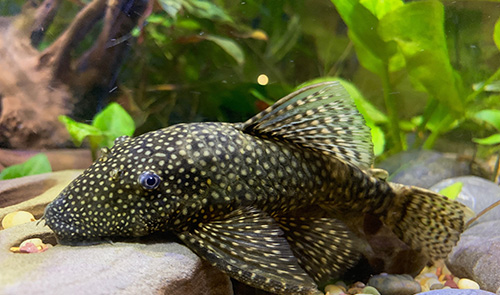 |
| Bristlenose Plecos are herbivorous or omnivorous. The primary diet is plant matter. For instance, algae, zucchini, cucumber, spinach, lettuce, etc. Vegetables should be boiled or steamed briefly to soften them before offering them to the fish. Besides that, algae wafers, pellets, and driftwood can be great options. Occasionally, you can offer small amounts of protein-based foods, like bloodworms. | |
| 6. African Cichlids (Various species) African Cichlids are a diverse group of freshwater fish native to various lakes and rivers in Africa. They generally prefer temperatures between 78℉ and 82℉ (25℃-28℃). The diet of African Cichlids depends on specific fish species and natural habitats. But most African Cichlids are considered omnivorous, with some species having a preference for either herbivorous or carnivorous diets. |
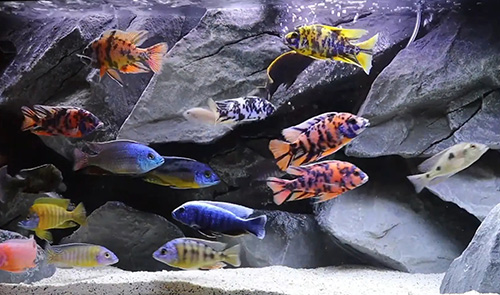 |
| Next, we will give you some feasible foods, including high-quality commercial cichlid pellets, bloodworms, brine shrimp, and other live and frozen foods. Commonly, cichlid species from Lake Malawi may prefer foods rich in spirulina, while species from Lake Tanganyika may be fond of more protein-based diets. | |
| 7. Paradise Fish (Macropodus opercularis) Paradise Fish are labyrinth fish native to Southeast Asia. Generally, they come in vibrant colors. Also, they can be kept in a water temperature up to 84℉ (29℃). Paradise fish are omnivores. |
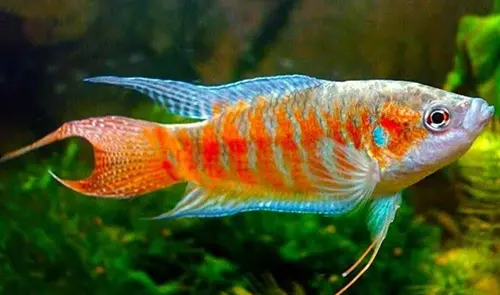 |
| They need a diet rich in protein. They eat mosquito larvae, daphnia, black worms, brine shrimp, small insects, small invertebrates, commercial flakes, and pellets, etc. Also, you can provide some small feeder fish occasionally. But you should be cautious. Because feeder fish may introduce diseases or parasites to your tank. | |
| 8. Endler’s Livebearers (Poecilia wingei) Endler’s Livebearers are small and colorful freshwater fish. They are closely related to guppies. Also, they are active and easy to care for. Endler’s Livebearers can tolerate a higher water temperature of 82℉ (28℃). |
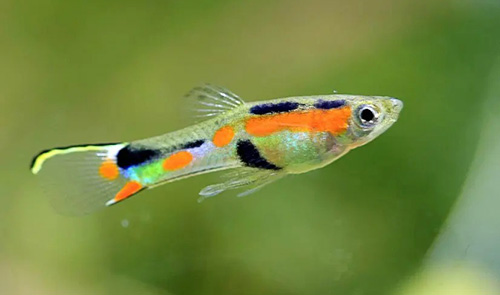 |
| Endler’s Livebearers are omnivorous. Their diet can consist of spinach, lettuce, zucchini, spirulina-based foods, flakes, pellets, freeze-dried food (e.g. tubifex worms, blackworms), and live or frozen foods (e.g. brine shrimp, bloodworms, daphnia). Additionally, they may also nibble on algae or consume small microorganisms naturally present in your aquarium. |
The bottom line
Though some fish can live in the summer heat, you should keep the water temp in ideal range. Also, maintaining great living conditions is necessary. Remember to provide proper filtration, aeration, and regular water changes to maintain water quality, especially during the summer when higher temperatures can affect oxygen levels.
